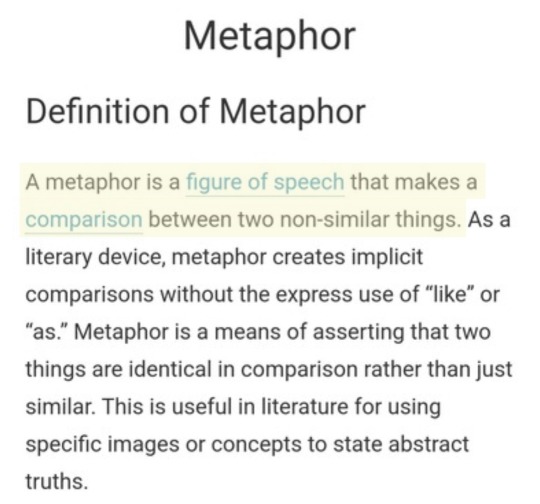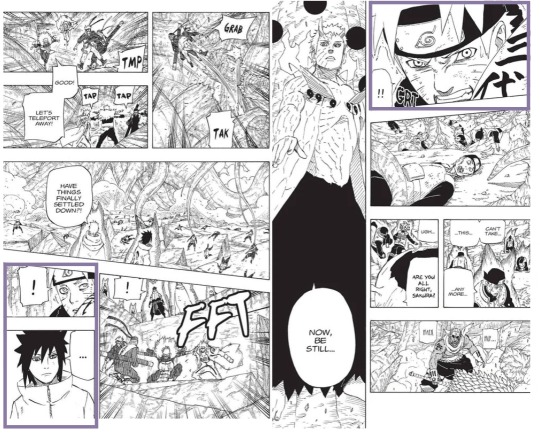Text


• Kiku (Chrysanthemum)

Chrysanthemums are said to have been introduced to Japan from China during the Nara period, and became popular among aristocrats during the Heian period. It was a flower that was deeply loved by the aristocracy and the imperial family, and these words are thought to come from its elegant appearance and trust as a medicinal herb, as well as the fact that it was heavily used by noble people. The chrysanthemum,
in Japanese calendars , generally belongs to the ninth month or October .
This is probably due to the fact that the fifth great festival ,
the Kiku
no Sekka (Festival of the Chrysanthemum)
fell on the ninth day of
the ninth month or toward the end of October. The fact is that the ninth month of
the old calendar covers portions of both October and November. Kiku- Flowering period: October to November and Harvesting period: Late September to early November. chrysanthemums are an autumn flower. Chrysanthemum is also known as October's birth flower.
The chrysanthemum and the fox are commonly associated ideas
in art and literature. an old tale related to this:
“A fox , assuming the form of a lovely
woman , bewitched a certain prince. One day, happening to fall
asleep on a bed of Chrysanthemums, she resumed her normal shape.
The prince, seeing the animal, shot at him, hitting the fox in the forehead. He afterward saw that his concubine had a wound in
the corresponding part of the head, and thus discovered her true
nature.”
In the Heian period, a chrysanthemum with cranes or long-tailed birds was a common motif. Chrysanthemum with Cranes represented longevity.
Chrysanthemum Known as the ‘flower of emperors,’ the chrysanthemum (kiku) is ubiquitous in Japan, appearing on 50-yen coins, passports and the emperor’s throne.
The Chrysanthemum is probably the most commonly portrayed flower in art, depicted in realistic form or as a symbol. Although the Chrysanthemum blooms most beautifully in October and November, the Chrysanthemum is one of the few flowers that blooms throughout the year. Therefore, it is also allowed to display the Chrysanthemum in all seasons.
The 16-petaled flower is the official emblem of the Japanese Emperor. The 16 petals symbolize the rays of the sun, which the ancestors of the Japanese worshipped as part of their faith
(Shinto). The Chrysanthemum symbolizes peace and majesty. It represents endurance and rejuvenation, with the yellow chrysanthemum often associated with the sun. kiku are connected to longevity, nobility and rejuvenation in Japanese culture, with strong connections to autumn. In Hanakotoba, chrysanthemums are associated with purity, truth, nobility, and trust. The fact that it blooms all year round and its beautiful flower never drops its petals emphasizes the aspects of longevity and endurance. Chrysanthemums are sacred flowers that are said to have the power to ward off evil spirits. Kiku is also used as a symbol of love, passion, purity, innocence, and royalty depending on its color. However, its symbolism may change, depending on the place and the local culture
The hanakotoba change based on the color of the kiku.
1. Red = Love. (red Chrysanthemum are given to the person you love or, at least, very high affection. It symbolize love and convey the flower language of “I love you". )
2. Yellow = Heartbroken. (Yellow chrysanthemums have a mixture of meanings. Sometimes they are associated with "broken love" and "longevity and happiness." [Yellow chrysanthemums have both positive and negative meanings. It has a negative connotation when it comes to love, so you may want to avoid giving it as a gift to your partner or lover]
3. White = Truth. (White chrysanthemums symbolize purity and cleanliness. They represent "truth," "sincere heart," and "adoration," and people even use them in wedding bouquets. White chrysanthemums link to death & grief, and people typically use them as funeral flowers and grave decorations. So it is better not to give a white chrysanthemum as a casual gift to someone)
4. Purple = Wishes will come true. (In ancient times, purple chrysanthemums symbolized nobility and were worn only by persons of high ranks. The color represents confidence and signifies concepts such as "dreams come true", "love wins" and "trust me". Some people decorate their homes with purple chrysanthemums to attract good luck and positive vibes.)
5. Pink = Sweet dreams. (Pink chrysanthemum are suitable for someone you like or love, signifying a positive gesture. In general, this is a good practice, especially when confessing one's love. It's a romantic flower language related to love, so it would be nice to give it to your partner with meaning.)
White flowers such as lilies, carnations, and phalaenopsis are often used to decorate altars and coffins at funerals, but the most commonly seen flowers are white chrysanthemums. The reasons includes,``because it is a prestigious flower that is used as the national flower,'' ``because the flower's scent is similar to that of incense,'' and ``because it is said that drinking chrysanthemum wine will increase your longevity.'' There are theories that it is used to pray for the health of those who attend, and that it has the power to exorcise evil spirits, but none of them seem to have a definitive origin.
• Asagao (Morning Glory)

Morning glories are said to have been introduced to Japan at the end of the Nara period or the beginning of the Heian period. It was brought to Japan by Japanese ambassadors returning from China. The name of its seed is Kengoshi. The name of its vine is Kujisou. The seeds were called ``Kengoshi'' because people used the seeds as medicine and they were so expensive that they were exchanged for cows, which were valuable assets at the time. It was not until the Heian period that it was confirmed to be called ``Asagao.'' Its name comes from the fact that it was called ``kaobana,'' which means ``a beautiful flower that blooms in the morning.''
Like the cherry tree and chrysanthemum, the morning glory is a representative flower of Japan. The morning glory likes the strong sunlight of summertime. The morning glory is a symbol of summer in Japan, and has been loved for over a thousand years. Asagao means “face in the morning.” It is a metaphor for a beautiful girl’s face, which might be the most attractive at that time of day. The plant blooms during the summer months. From mid-July to early October, flowers in blue, purple, white, red, pink, and multiple colors bloom. In Japanese culture, Asagao is a symbol of new beginnings and the start of a new day. The flowers open in the morning, representing the dawn of a new day, and close in the evening, symbolizing the end of the day and the passing of time. Asagao begins to bloom during the tanabata season, and people have come to love the flower itself because of its relation to the star festival’s legend.
[ Every July 7th is a star festival in Japan called "Tanabata". The original story came from China to Japan during the Nara era (710 - 794). “A long time ago, there was a girl named Orihime who was the daughter of a god and a very good weaver. Her father searched for a husband for her and found a boy named Hikoboshi, a cattle herder. They fell in love and got married. However, they became lazy after the marriage and did not work at all. Orihime’s father became furious about their complacency and set each on either side of the Milky Way as punishment. The pair was heartbroken and wept constantly. Feeling compassion for them, Orihime’s father gave the couple permission to see each other once a year on July 7th at night”. But it is said that it is impossible to meet if it rains, so Japanese people always wish that there are no clouds in the sky. Tanabata has a Japanese tradition of making decorations and placing them on bamboo branches. People write their wishes on colorful rectangular papers and place them on bamboo along with decorations. Because Orihime was good at weaving, people usually wishes to be good at something.Bamboo is important for Tanabata. ]
During the Edo period, people began to call this flower "Asagao Hime" and associated it with Orihime, the weaver of the Tanabata legend. People began to think that when the flower bloomed, Orihime and Hikoboshi would be able to see each other, so the flower turned out to bring good fortune. women in Edo may have grown morning glories as a charm for love. The reason why morning glory has so many words related to love may be related to the Tanabata legend. Perhaps because of their beautiful blooming appearance, they called them "Asagao Home" (Princess Asagao).
The flower language of morning glory includes, "affection (in love)'', ``unity/bond/cohesiveness/solidarity'', ``fresh tomorrow'', and ``entwined with you''. the blooming season of Asagao lasts from spring until fall, so this Japanese flower also symbolizes a long-lasting bond of love. In the language of flowers, asagao flowers symbolize a deep and loyal love and Willful promises. The flowers symbolise (1) bonds of affection (aijō no kizuna = 愛情の絆, (2) short-lived love (hakanai-koi = はかない恋 and (3) solidarity/unity (kessoku = 結束). Asagao in Hanakotoba can be interpreted as two completely different things. First as a symbol of a brief love. In Japan, they are symbols of innocence and love. It is said that the name was associated with the tightly coiled vines and the flowers that bloom early in the morning. In addition to this, morning glories have different flower meanings depending on their color.
1. Blue morning glory- The flower language of blue morning glory is "short/brief love" and "transient love/fleeting love". The name may have come from the fact that it blooms in the cool windy weather of the early morning and wilts in the afternoon. It only blooms for a short time and withers like a fleeting dream. It is a fleeting yet beautiful language of flowers. Blue is one of the most common flower colors of morning glories, along with purple.
2. White morning glory - The flower language of white morning glory is ``overflowing joy'' and ``strong bond.'' It has a positive and powerful image, which is completely different from the blue morning glory. The pure white appearance of the flowers suggests ``overflowing joy,'' which is reminiscent of purity and weddings, and the morning glory vines that wrap around each other and grow endlessly may have given it the meaning of ``strong bonds'' Or the way they grow by vigorously stretching out their vines without succumbing to the summer heat is probably connected to the language of flowers.
3. Purple morning glory- The flower language of purple morning glory is "calm" and "normal/ordinary". Purple has a graceful feel and is a color that will accompany you at any ceremonial occasion. The purple color of morning glory is darker and deeper than other purple flowers, and it seems to have a calming effect. This flower language probably came from the cool purple flowers that bloom in the early morning hours of summer, just before the heat rises.
4. Red morning glory- The flower language of red morning glory is "Ephemeral/transient and passionate love." This is just like the flower. Morning glories only bloom for a short time, but the morning glories bloom red in the summer morning sun and are a symbol of ``Ephemeral/transient and passionate love.''*
5. Pink morning glory- The flower language of pink morning glory is "a feeling of peace and contentment." Unlike bright blue morning glories, deep purple morning glories, and pure white morning glories, pink morning glories are often pale in color and seem to lull the viewer into a momentary sense of peace. Combined with the round shape of the flower, it may have been named because of its reassuring appearance.
5 notes
·
View notes
Text

“It Is an Honor to Be Suspended for Palestine”
Dispatches from the Solidarity Encampment at Columbia University
https://crimethinc.com/Columbia2024
In this in-depth report, participants offer a blow-by-blow account of the events at Columbia, appraising the tactics that the demonstrators have employed and the challenges that they face.
16K notes
·
View notes
Text

Proud boyfriends 💕 based on Kishimoto's art
#what if I put a picture of my bf in my locket and wear it as a necklace#so beautiful✨ 👏#sns art#tamelee art
1K notes
·
View notes
Text

🍥:🫣💦
2K notes
·
View notes
Text

晴れる
2K notes
·
View notes
Text

disgusting 14 yo boyfriends behavior
1K notes
·
View notes
Text

stupid itachi doesn’t even understand that sneaking your boyfriend in and out of your bedroom window is the most romantic thing in the world…
2K notes
·
View notes
Text
This is a Naruto/Sasuke meta, just bear with me.
Metaphor and metonymy are generally thought to be two distinct types of figure of speech, with the basis of metaphor being similarity and the basis of metonymy being contiguity, or association.


The distinction between the two can be clarified by the examples below. In using the metaphor, "her smile was like the sun," we are invoking a physical similarity (brightness) between two non-similar things: a smile and the sun. Whereas, in the sentence, "we will swear loyalty to the crown," we are not necessarily implying that a royal person is similar to a physical crown, rather, we are invoking the concept of association. Royal people wear crowns and thus we associate them with crowns and use the term crown as a substitute for royal person.

Kishimoto utilizes both metaphor and metonymy in the naming of the Great Naruto Bridge and these tools build on Naruto and Sasuke's relationship (corny pun intended).
Naruto is implicitly referred to as a symbol of triumph and endurance, and it is on this basis that Kishimoto, acting through Tazuna, establishes a metaphoric connection between Naruto and The Great Naruto Bridge. Within this metaphor, Kishimoto also adeptly combines the textual and visual narrative, and by placing Naruto's face in between suggestive text, he establishes the bridge as a metonymic stand in for Naruto, easily allowing for the reader to read "Our bridge will become super famous the world over as a symbol of triumph and endurance" and replace "bridge" with "Naruto" without loss of meaning.


What's more, this metaphor/metonymy that establishes The Great Naruto Bridge as a representative stand in for Naruto is specifically encoded within the name of the bridge itself. This means that the "bridge = Naruto" is represented by the name Tazuna chose.
This will sound redundant, but it's important to emphasize that the Great Naruto Bridge structure and more specifically, the name of the bridge operate as a stand in for Naruto. When Tazuna states that he has a perfect name for the bridge, Naruto is visually isolated from the rest of the team before Tazuna states his proposed name for the bridge. The propsed name for the bridge only includes Naruto's name for a reason. Kishimoto could have easily encoded a symbolic relationship between the bridge and Team 7 as a whole within the narrative, given that Tazuna acknowledged Team 7 helped him complete said bridge, yet Naruto was the only element chosen for the bridge dedication.
THAT is why when Sasuke stares at the bridge, and more specifically, the name of the bridge, it is narratively meant to symbolize him figuratively looking at and reflecting on Naruto ONLY.

In this scene, Kishimoto even builds on the same pattern that he uses when Sasuke looks at Naruto in grand moments and stares at him to the point of being disarmed/ignoring the things around him.
We see this during the reunion when being distracted by Naruto causes Sasuke to get caught of guard by Yamato.

We see this during the 5 Kage Summit Arc when Sasuke gets caught of guard by Kakashi because Naruto's presence disarmed him.

And most significantly, we see it during the war arc, when Sasuke is too caught up in staring at and feeling anger at Naruto's distress to respond/pay attention to other people addressing him. Sasuke's soft smile when staring at the bridge is the same expression of satisfaction he had after he successfully encouraged Naruto during the war too.


And the beauty of the bridge scene is that while the bridge metonymizes Naruto as a whole, is specifically represents the Naruto who stands as a symbol of triumph and hope. In having Sasuke stare at the bridge, Kishimoto implicitly reinforces Sasuke's admiration of Naruto's emotional strength. It's no coincidence that when Sasuke expresses the same smile for Naruto, it comes during a moment when Naruto's (gay) thoughts operate as a metaphorical bridge connecting the shinobi alliance and when he expresses the resilience to stand up and fight, something that especially bothers Obito who spent a significant portion of the fight testing Naruto's resolve and trying to make him give up.
Sasuke is the symbol of hope for the symbol of hope.
117 notes
·
View notes











